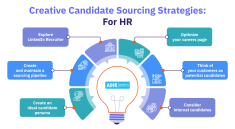simppler – What if you could see your company’s future? What if you knew which employee might leave months before they resign? Most HR teams track countless metrics but miss the one number that actually predicts the future. They react to turnover after it happens, scrambling to fill expensive gaps. But people analytics now offers a powerful predictor that gives you a six to nine-month head start on retention. This isn’t about mind reading. It’s about understanding the direct link between how people feel and whether they stay. The answer lies in a comprehensive employee engagement score. If you don’t measure this, you’re flying blind into a retention crisis.
The High Cost of Playing Guessing Games with Retention
Guessing about retention is a luxury you can’t afford. Voluntary turnover creates a massive financial drain. Replacing one employee can cost up to twice their annual salary. For a 500-person company with average $60,000 salaries, even 10% turnover means millions lost each year. But money isn’t the only problem. When people leave, morale suffers. Institutional knowledge disappears. Remaining team members face more work, which often leads to more burnout and more resignations. Traditional warning signs like productivity drops appear too late. They show up when employees are already disengaged and interviewing elsewhere. By then, saving the relationship is nearly impossible. This reactive approach makes a proactive employee engagement score so valuable. It puts you back in control of your human capital.
Why Engagement is the Crystal Ball of HR
You might wonder why we focus on engagement rather than satisfaction. The difference matters. Satisfaction is superficial. An employee might like the free coffee and chairs but feel completely disconnected from their work. Engagement goes much deeper. It measures emotional commitment. Engaged employees feel passionate and invested. They want to help the organization succeed. This emotional connection strongly protects against turnover. A strong employee engagement score captures this through carefully designed questions. These questions explore psychological safety, company values, management effectiveness, and growth opportunities. This score doesn’t just measure current happiness. It predicts future loyalty. It’s the difference between checking today’s weather and having a radar system for cultural storms.
Decoding the Metric: What Goes Into a True Engagement Score?
So what does this metric actually measure? A true employee engagement score isn’t one simple question. It’s a composite index from several key statements. Employees respond to these through regular pulse surveys. Think of it as a vital signs check for your company’s health. The questions typically focus on proven retention drivers. These include the employee-manager relationship, belief in company leadership, growth opportunities, and feelings of recognition. The power isn’t in any single answer but in the overall trend. A drop in a team’s employee engagement score acts as a major warning sign. It signals eroding commitment long before anyone updates their resume.
From Data to Action: How to Respond to the Signals
Collecting data is only the beginning. The real value comes from your response. A declining employee engagement score is a diagnostic tool, not a final judgment. It shows you where problems exist, but you need to discover why. This score starts crucial conversations. If a team’s numbers fall, leadership must investigate with anonymous feedback or listening sessions. Maybe a new manager needs support. Perhaps a policy change caused unexpected frustration. The employee engagement score creates a starting point for honest dialogue. It moves the conversation from “everything’s fine” to “our numbers show a concern in this area. Can you help us understand why?” This responsive approach shows employees that their feedback matters. It turns the metric from a surveillance tool into a catalyst for positive change.
Implementing Your Early-Warning System
Starting this process is easier than it appears. You don’t need perfection immediately. Just begin building a consistent listening strategy. First, choose a platform for short, frequent pulse surveys. Monthly or quarterly surveys work better than an annual census that becomes outdated. Ensure anonymity to get honest responses. Second, explain the “why” to your employees. Be transparent. Tell them this isn’t performance evaluation but a tool to improve the company for everyone. Third, and most importantly, close the feedback loop. Share general findings with the organization. Then outline your planned actions. When employees see real changes from their feedback—like new development programs or better tools—their trust grows. Their employee engagement score will naturally rise. This creates a powerful cycle of feedback and improvement that strengthens your entire culture.
The Ultimate Measure of Organizational Health
Tracking this metric does more than reduce turnover. It helps build a resilient, high-performing organization. A strong employee engagement score reflects ultimate organizational health. It connects to higher customer satisfaction, better productivity, and greater innovation. It shows your people aren’t just present—they’re fully committed. They become your best ambassadors, your top problem-solvers, and your key to long-term growth. In today’s world, talent is the greatest competitive advantage. Can you afford not to listen? The data is ready to speak. The real question is whether you will listen before it’s too late.



